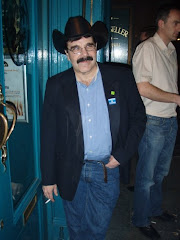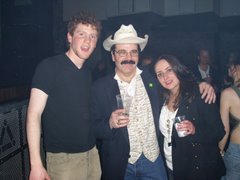Republican Politics, American Style
Published on February 12th in Metro Éireann By Charles Laffiteau
Today I want to bring my India travelogue to a close by discussing some of the people I met and the other sights I saw during my Indian sojourn.
While I was leaving the Gandhi Museum to return to my hotel, an obviously poor and homeless young girl of maybe 13 years approached my car begging for money. She was dragging a very deformed foot around on crutches and looked like she hadn’t had a bath in at least a week. The sight of this pitiful young waif was more than I could bear, so I reached into my pocket and gave her 10 rupees, about 15 euro cents.
The look of absolute joy and gratitude on her face when I dropped the coins into the dirty little palm of her hand was indescribable and judging by her reaction you would have thought I had just given her a million Euros. I then responded by taking her picture but as soon as she saw the camera she became even more animated; smiling and waving at me while she thanked me again and again, until my car slowly pulled away into traffic. I didn’t really need a photo of this young girl however, because as I write this, I can still see her smiling face pressed against my car window.
The next day I went to see Akshardham, a Hindu temple which was as modern a tourist attraction as the others I saw in India were ancient. But unlike the older and much more historic holy places India is famous for, visitors to the Akshardham temple must check their purses, phones, camera’s and other valuables before they are even allowed to enter the temple’s grounds, in part to ensure that no photos are taken while you are inside.
Inside one finds beautifully manicured gardens dedicated to famous Hindu’s important to Indian history, exhibitions which explain the Swaminaran faith and Hindu teachings along with gold and marble statues of various Hindu deities. For a fee of 50 to 100 rupees (75-150 Euro cents) there is an indoor boat ride, a huge new IMAX theatre showing a movie about Lord Swaminarayan and a sound and light show which depicts the Hindu vision of the beginning and the end of the world. But compared to all the other places I saw in India, Akshardham did strike me as a bit over the top.
A few days later, while I was being driven back to my hotel from Jawaharlal Nehru University, I had another memorable encounter with the poorest of India’s poor; a rather sad looking little 5 year old boy dressed in rags and caring for his year old baby brother. But when I stopped to take his picture, he stood up smiling and waved happily at me as if he didn’t have a care in the world. When I gave him 10 rupees though, he let out a whoop as if he had hit the jackpot and the two of them began following my rickshaw as we moved along with the flow of the traffic.
Once again I didn’t really need a picture of him and his little brother to preserve the memory though, because it is still as fresh in my mind now as it was right after I lost sight them in Delhi’s traffic congestion. I am still amazed at how genuinely happy India’s poorest people and children appear to be. Indeed money can’t buy that kind of happiness.
The following weekend I visited India Gate and the beautiful government buidings that house India’s parliament and the prime minister’s offices, an area of New Delhi curiously devoid of the squalor one sees everywhere else in the city. The next day I spent walking the grounds surrounding Qutb Minar, one of the largest minarets in the world. This minaret used to be a part of one of the largest Mosques in the world, Quwwat al Islam Mosque (The Power of Islam Mosque) which now lies in ruins.
Ironically, the mosque was originally built using the ruins of older temples built for the Hindu and Jain religious faiths, so what remains today is an diverse mix of India’s Hindu and Muslim architecture. The site also holds the graves of some of India’s ancient rulers and a huge, pure iron pillar, which never rusts, that was taken from a Hindu temple.
Then on my last weekend in New Delhi, I took an overnight trip to Agra to tour one of the Seven Wonders of the World; the famous Muslim shrine to a man’s love for his wife, the Taj Mahal. To help protect the beauty of this white marble masterpiece from pollution, petrol burning cars and trucks are banned from the area surrounding this marble palace, which upon closer inspection, is actually white marble with calligraphy panels made of inlaid jasper. Inside the Mausoleum is the tomb of Mughal Emperor Shah Jahan’s favorite wife, Mumtaz Mahal, surrounded by beautiful and intricate geometric designs made up of inlaid lapis and other semi-precious stones.
The entire Taj Mahal complex is actually a series of towers and buildings that are surrounded by and connected to beautifully designed and well maintained gardens. It would be safe to say it would cost trillions of Euros to build a complex like this today.
When I was leaving Agra to return to Delhi and my flight home to Ireland, I had one more memorable encounter with a native Indian woman carrying a months old baby. She was begging for money and I once again parted with 10 rupees. And just like the children I gave 10 rupees to she was overjoyed and oh so thankful while I took her photo.
Today I am a much richer person because of what I experienced in India. I believe that India’s real jewel isn’t the Taj Mahal, its India’s people. The vast majority of Indians may be extremely poor in terms of material possessions but they are incredibly rich in character and spirit.
Wednesday, April 1, 2009
Subscribe to:
Post Comments (Atom)



No comments:
Post a Comment